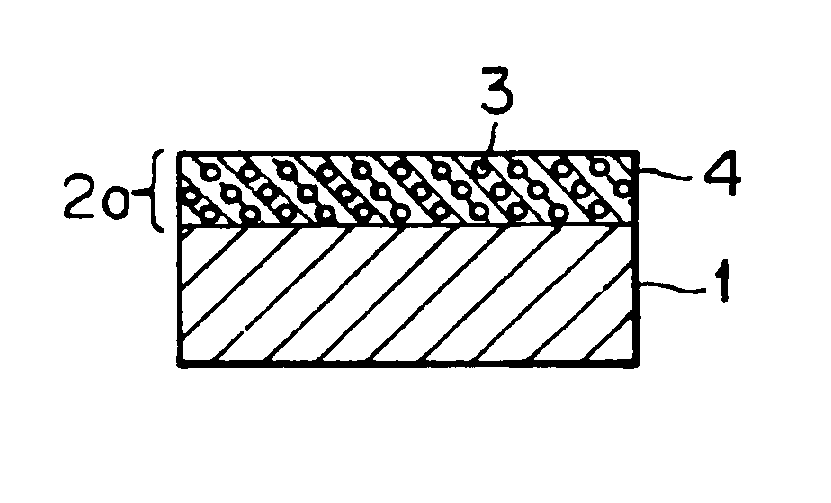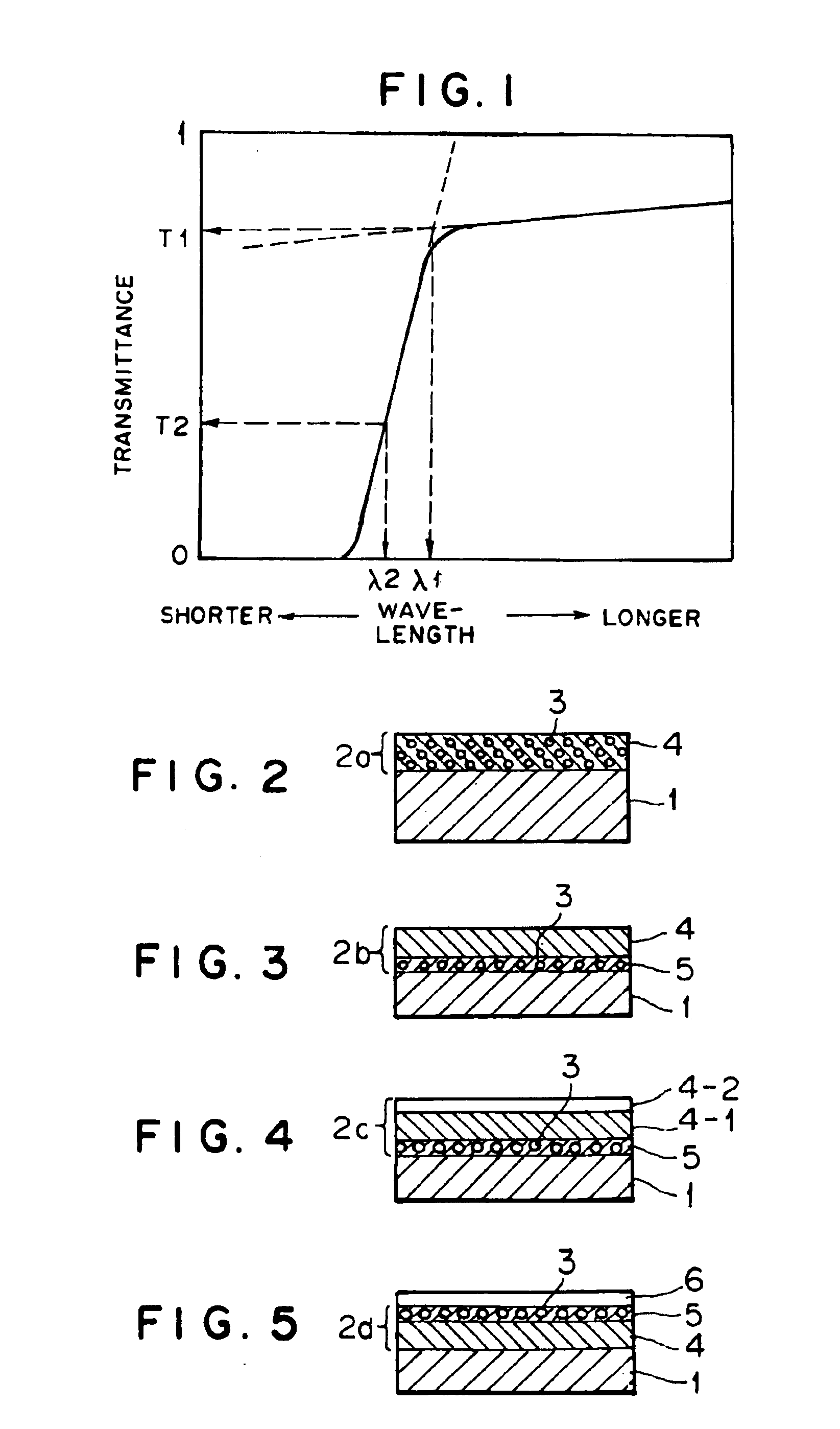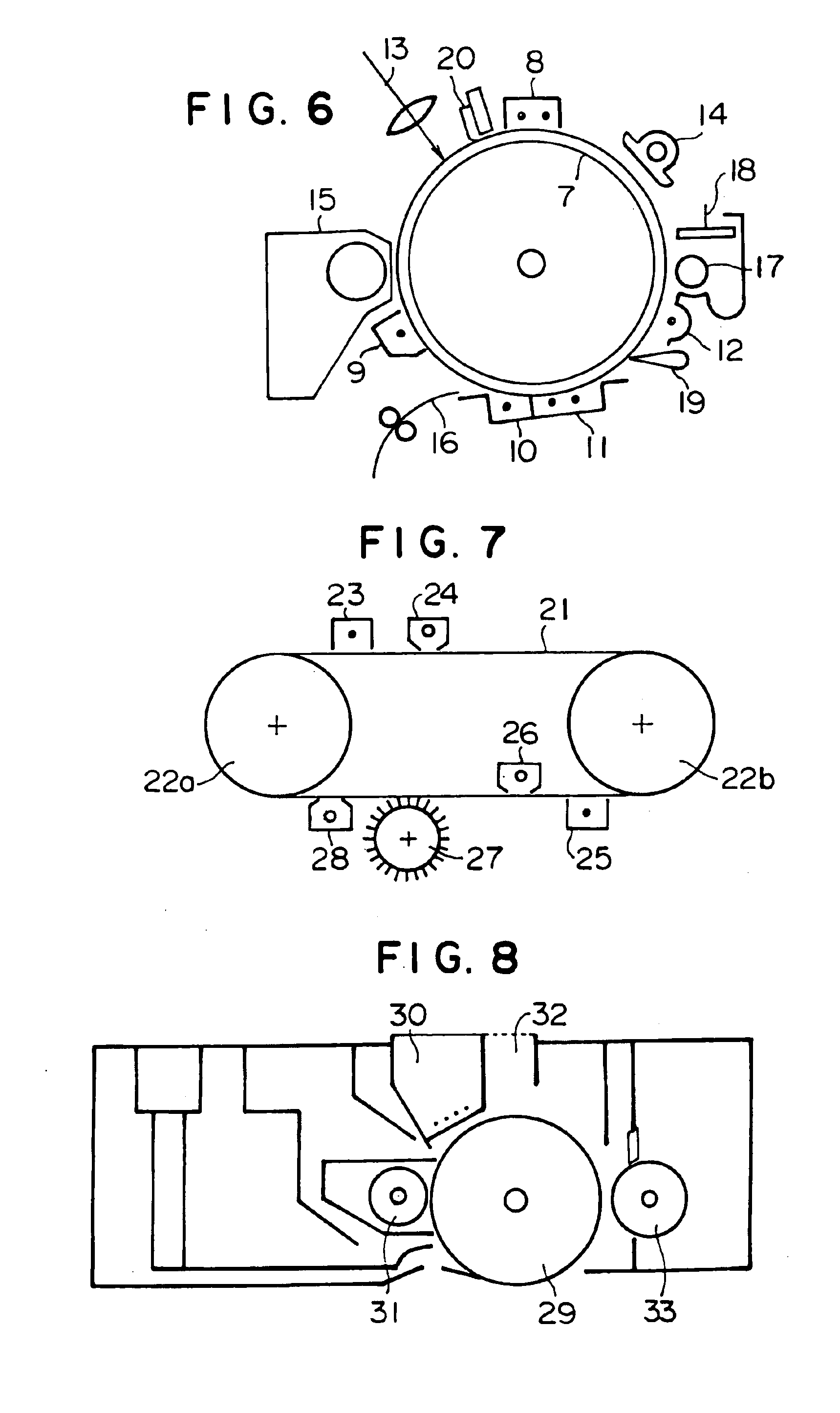Electrophotographic photoconductor, image forming method and apparatus, and process cartridge using the photoconductor, and long-chain alkyl group containing bisphenol compound and polymer made therefrom
- Summary
- Abstract
- Description
- Claims
- Application Information
AI Technical Summary
Benefits of technology
Problems solved by technology
Method used
Image
Examples
preparation example 1
Preparation of Compound of Formula (2)
[0332]19 parts by weight of phenol, 20 parts by weight of 14-heptacosanone, 13 parts by weight of concentrated hydrochloric acid, and 0.01 parts by weight of 3-mercaptopropionic acid were placed in a reactor with a stirrer, to cause a reaction at 80° C. for 20 hours.
[0333]After completion of the reaction, the reaction mixture was cooled and an organic layer was extracted therefrom by the addition of water and acetic acid. The organic layer was washed with water three times, and dried over anhydrous magnesium sulfate. The organic layer was filtered off, and a filtrate was concentrated. The resultant residue was chromatographed on silica gel and eluted with a mixed solvent of toluene and ethyl acetate (5 / 1). The resultant crystal was recrystallized from toluene, whereby 22 parts by weight of a bisphenol compound represented by formula (k) were obtained.
[0334]The melting point of this compound was 114.5 to 115.0° C.
[0335]The results of the element...
preparation examples 2 and 3
Preparation of Compounds of Formula (2)
[0337]The procedure for preparation of the bisphenol compound of formula (k) in Preparation Example 1 was repeated except that 14-heptacosanone used in Preparation Example 1 was replaced by 11-heneicosanone and 17-tritriacontanone, respectively in Preparation Examples 2 and 3.
[0338]Thus, bisphenol compounds according to the present invention were prepared.
preparation example 4
Preparation of Polycarbonate Resin
[0339]3.8 parts by weight of the bisphenol compound of formula (k) obtained in Preparation Example 1, 1.8 parts by weight of a bisphenol Z of which amount was equimolar to that of the bisphenol of formula (k) in terms of molar amounts, and 0.02 parts by weight of 4-tert-butyl phenol serving as a molecular weight modifier were placed in a reactor with a stirrer. An aqueous solution prepared by dissolving 4 parts by weight of sodium hydroxide and 0.2 parts by weight of sodium hydrosulfite in 40 parts by weight of water was added to the above reaction mixture and dissolved therein with stirring in a stream of nitrogen.
[0340]Thereafter, the reaction mixture was cooled to 20° C. With vigorously stirring the reaction mixture, a solution prepared by dissolving 2.4 parts by weight of bis(trichloromethyl)carbonate, namely, a trimer of phosgene, in 40 parts by weight of dichloromethane was added to the reaction mixture to cause a reaction as forming an emulsi...
PUM
| Property | Measurement | Unit |
|---|---|---|
| Length | aaaaa | aaaaa |
| Angle | aaaaa | aaaaa |
| Diameter | aaaaa | aaaaa |
Abstract
Description
Claims
Application Information
 Login to View More
Login to View More - Generate Ideas
- Intellectual Property
- Life Sciences
- Materials
- Tech Scout
- Unparalleled Data Quality
- Higher Quality Content
- 60% Fewer Hallucinations
Browse by: Latest US Patents, China's latest patents, Technical Efficacy Thesaurus, Application Domain, Technology Topic, Popular Technical Reports.
© 2025 PatSnap. All rights reserved.Legal|Privacy policy|Modern Slavery Act Transparency Statement|Sitemap|About US| Contact US: help@patsnap.com



